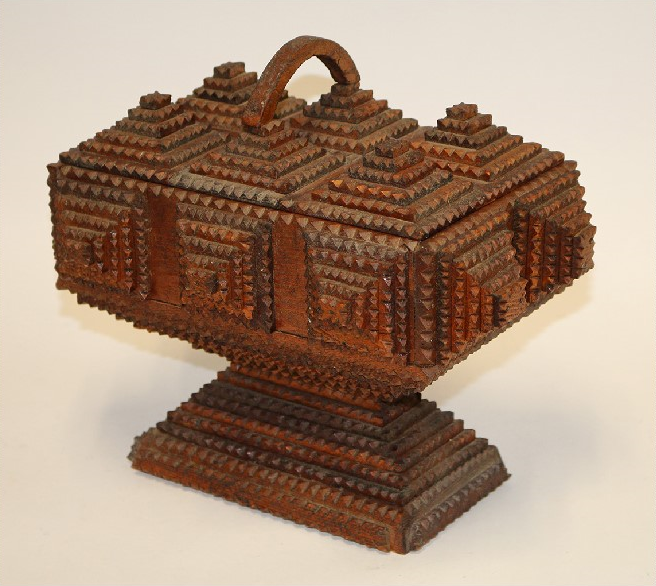This “tramp art box” was carved from old cigar boxes by John Chester Chaffee (1881–1975) as a gift for his wife, Kitty Belle Casey (Chaffee). Mr. Chaffee carved the box sometime in the late 1800s or early 1900s, and his wife used it as a sewing box. It was passed on to their son, John, who then passed it on to his daughter Jacqueline, who kindly donated this wonderful piece for display at the Miniature Engineering Craftsmanship Museum.
In 1865, passage of the Revenue Act mandated that all cigars must be sold in new (unused) boxes. Cigar smoking was popular at the time, and manufacturers responded by producing cedar and mahogany boxes by the billions. Whittling and wood carving were also popular pastimes, and thrifty wood carvers (not just tramps) found the boxes to be an endless supply of wood. By shaping, notching, and pyramiding the easily cut factory planed panels, they made picture frames, boxes, and other objects.
For larger projects, like tables, dressers, or desks, wooden shipping crates made by the rapidly expanding railroads were used. Though some were made by tramps or hobos to sell or trade, most were probably made by friends or family as gifts, sparking a new hobby for many and giving birth to a novel American folk art form.
Common motifs included squares, rectangles, triangles, and circles. Advanced craftsmen would also carve diamonds, hearts, flowers, crosses, and other intricate shapes. Ideally, the notched edge of each layer would meet the edge of the layer below. Hidden drawers or secret compartments were also popular.

